When people ask me about my favorite places in Alaska, Kenai Fjords National Park is ALWAYS at the top of the list. Between the wildlife and and glaciers, it’s beyond remarkable. Kenai Fjords National Park, located near Seward, Alaska, is a breathtaking expanse of rugged wilderness, towering glaciers, and abundant wildlife. It’s difficult to capture how cool of a place KFNP is, but I’ll try.
Established in 1980 as part of the Alaska National Interest Lands Conservation Act, this 669,984-acre park is known for its beautiful fjords carved by glaciers, as well as its variety of marine and terrestrial ecosystems. Home to a portion of the Harding Icefield, one of the largest ice fields in North America, Kenai Fjords is an incredible destination for adventurers, nature lovers, and photographers alike. My kids are amazed with each visit we make.
If you have questions about visiting Kenai Fjords National Park (KFNP), need photography tips or even just have general questions about planning an Alaska trip, please leave a comment or send us a note. We’re always happy to share more!
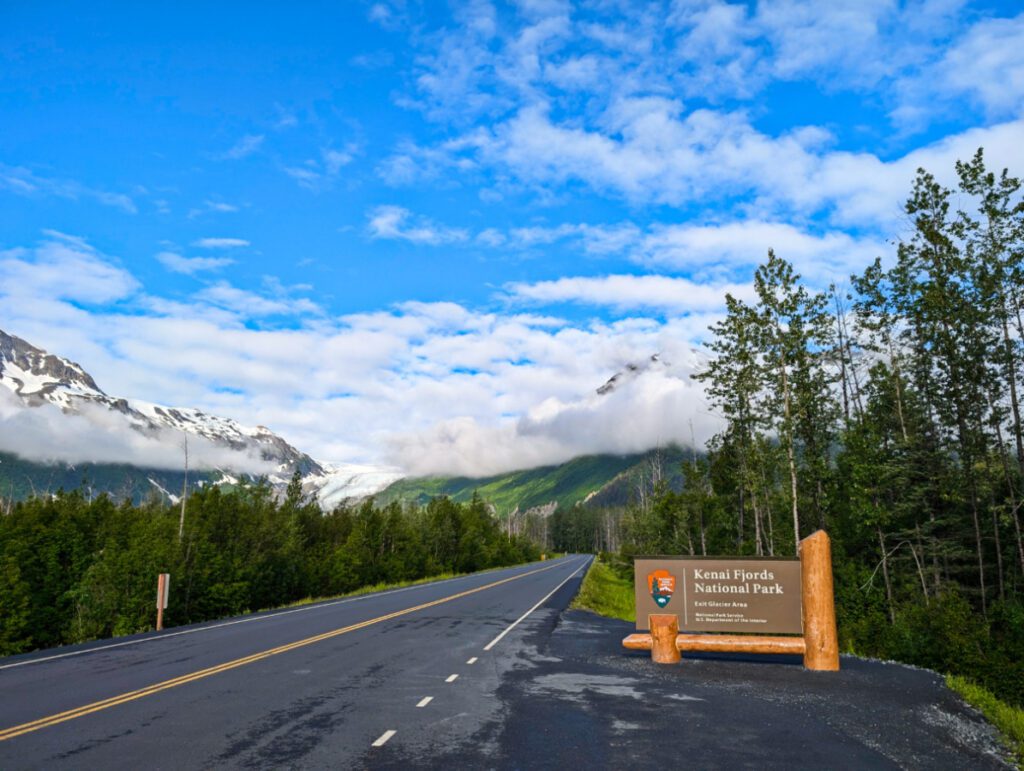
Visiting Kenai Fjords National Park
Kenai Fjords National Park is an unforgettable experience for visitors as they explore Alaska’s coastal wilderness: the Fjords. Whether it’s heading into the fjords on a boat tour, hiking to view glaciers and the Harding Icefield, or encountering wildlife on the water or trail, the park is full of opportunities to connect with nature. For the best experience, plan your visit between May and September, when the weather isn’t pure winter storm conditions, and the visitor centers are open, ensuring you can make the most of all that Kenai Fjords has to offer.
I think having one full day on the water and one day that’s a combination of hiking and kayaking is a great way to experience the park. Kenai Fjords National Park is diverse, beautiful and, I think, quintessentially Alaska. Even if you are visiting Anchorage and not planning on heading down to Seward for a few days, you should still plan on making the trip down for at least a boat tour of KFNP. You’ll be glad you did.
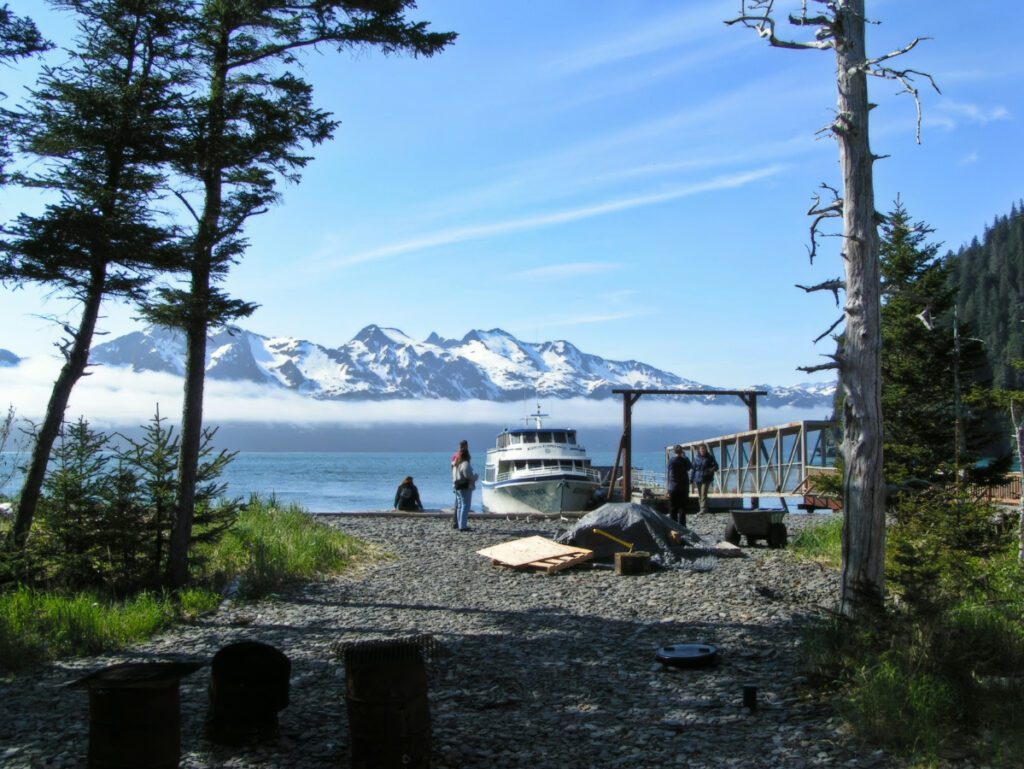
Land Acknowledgement of the Alutiiq Peoples of the Kenai
I think it’s very important to understand the background of any area we travel to. Sometimes that history is beautiful, sometimes it’s ugly or messy, and sometimes it’s both. Alaska was taken from several large groups of people, many of whom were forced to attend Indian Schools to be re-educated. Alaska has a history of segregation between white people and the different tribes who’ve called this land home for tens of thousands of years. This is why it’s important to acknowledge the people and make an effort to learn and travel responsibly.
We acknowledge that the lands we visit or on which we live here are the traditional lands of the Athabascan, Dena’ina, Tanana, and Alutiq (Alutiiq) Peoples that have stewarded this land throughout the generations. We acknowledge the history and current lives of these people and aim to interact with and visit their ancestral lands respectfully and with gratitude.
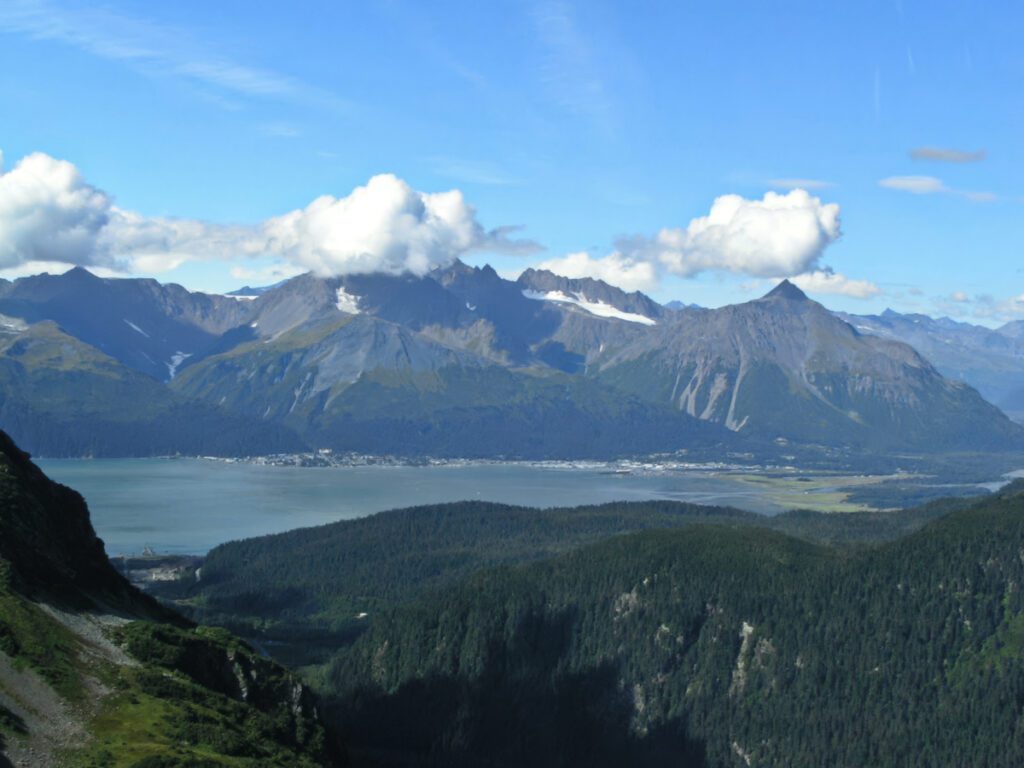
Brief History of Kenai Fjords National Park
The land around Kenai Fjords National Park holds significant cultural importance for the Alutiiq people, who have inhabited the area for thousands of years. The Alutiiq adapted to the harsh conditions, thriving in an environment dominated by ice and ocean. When Russian explorers arrived in the 18th century, they began documenting the region and forming settlements all around the Kenai Peninsula, bringing changes to the way of life for indigenous communities from what’s now Homer (Seldovia) and up the Cook Inlet. However, it wasn’t until the 20th century that the area’s unique geological formations and biodiversity were really brought to public attention and eventually protected.
The park was officially designated in 1980, following increased conservation efforts spurred by the environmental movement in the Lower 48. The establishment of Kenai Fjords National Park aimed to preserve the unique landscape and ecosystems of the fjords and icefields, while offering opportunities for research and recreation. The park has since become one of Alaska’s most visited destinations, drawing people from all over the world. I can’t even begin to count the number of times I’ve visited, both when I was younger and now with my own kids. It’s a special place for many reasons.
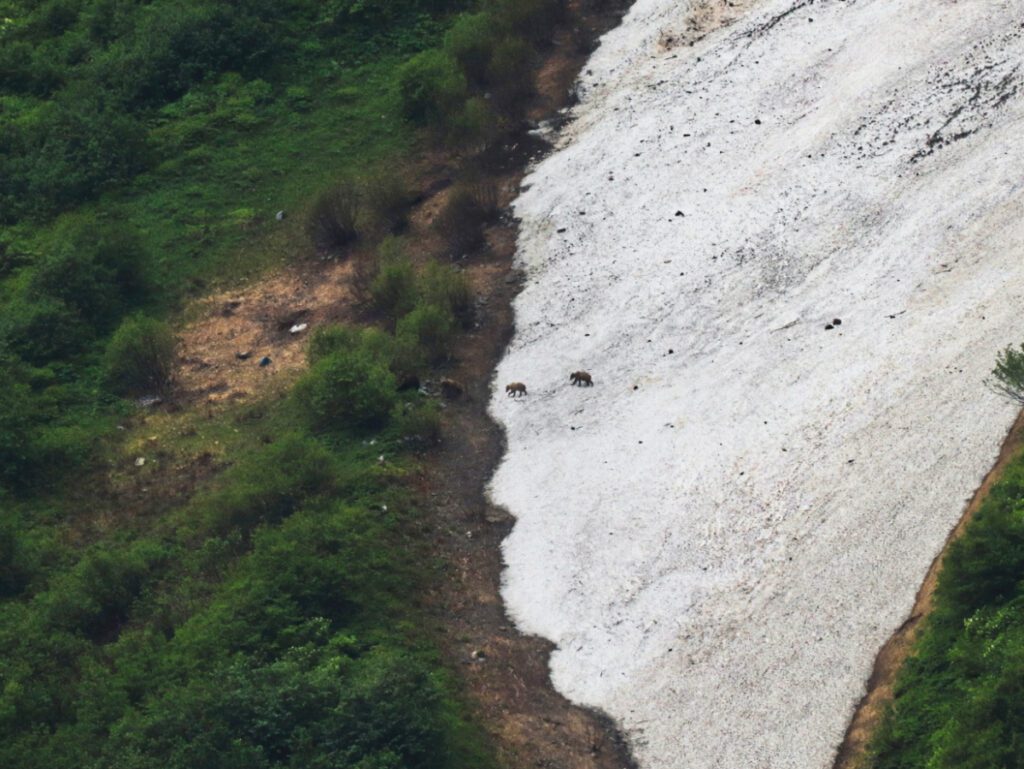
Top 3 Activities in Kenai Fjords National Park
So what do you do when you visit a park that seems like it’s all water? Well, of course you have to get out on the water, but the area between the fjords is worthy of exploration as well. From boat tours and kayaking to hiking and glacial trekking, we’ve got some fantastic ways to explore and experience Kenai Fjords National Park.
Glacier Tours and Cruises
One of the most popular activities in Kenai Fjords is joining a boat tour to explore the majestic fjords and glaciers. These tours are perfect for spotting marine wildlife, such as humpback whales, sea otters, and harbor seals. The cruises typically navigate through Resurrection Bay and into the heart of the fjords, where visitors can witness the awe-inspiring sight of calving glaciers as massive chunks of ice break off and thunderously plunge into the ocean.
My favorite glacier to visit is Northwestern Glacier, but whether you’re going there or Aialik or Holgate Glacier, you’ll love it. A wide range of tour operators offers different cruise packages, from half-day excursions to full-day adventures visiting different spots. The best time to experience these glacier tours is during the summer months when the fjords are most accessible. Tours tend to stop around September 20th or so.
Here are the tours for really getting out into the park on the water. We have always gone with Kenai Fjords Tours for our trips, but there are other options available if you want to try a different company. Here are our picks:
- Kenai Fjords National Park Tour – 6 hours – includes lunch and some snacks, visits Aialik or Holgate Glacier OR do the same route and add dinner on Fox Island
- Northwestern Fjord Tour **MY FAVORITE** – 8 hours – includes light breakfast and lunch w/ some snacks, visits Northwestern, Northeastern, Redstone and Southwest Glacier (one fjord has them all)
- Resurrection Bay Tour w/ Fox Island – 5 hours – includes dinner on For Island at the day lodge
- Glacier Dinner Cruise – 5.5 hours – includes dinner onboard (drinks are extra), visits Holgate or Aialik Glacier.
- SPRINGTIME ONLY Resurrection Bay Tour – 4 hours, March – May – includes lunch, doesn’t visit any glaciers but is for wildlife watching
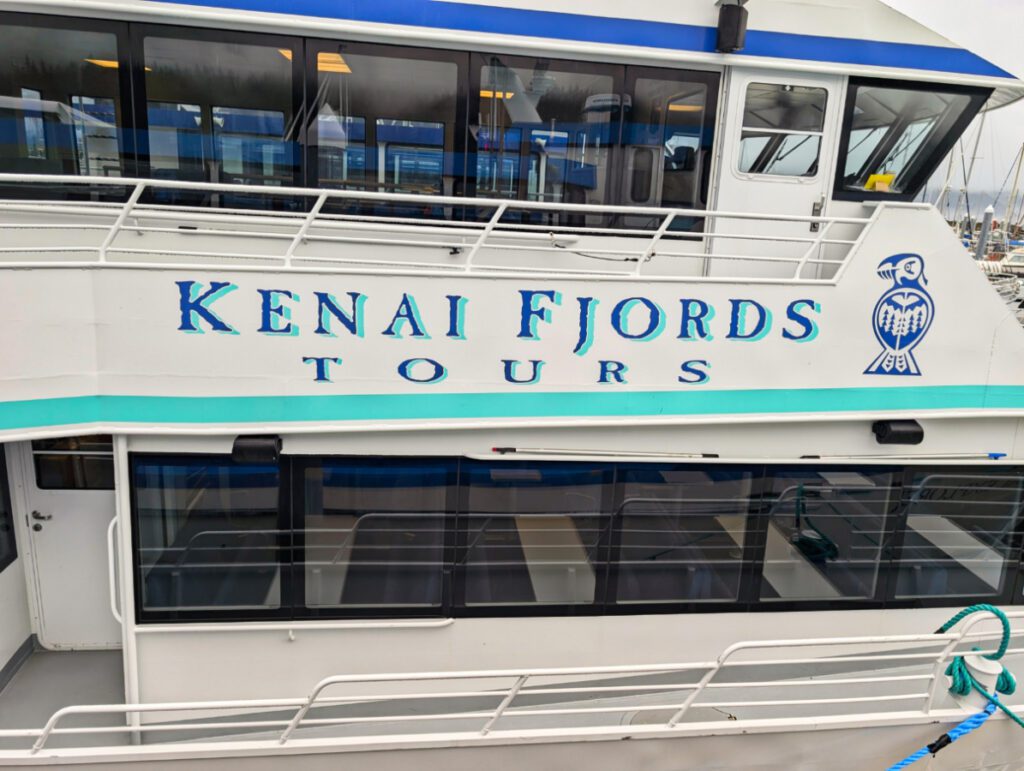
Hiking to Exit Glacier and the Harding Icefield
Exit Glacier used to be so much closer to the trail than it is today. It had been years since I’d hiked it and then I went back to take my kids on the trail (2024) and was stunned how much it had receded. It’s still a beautiful hike, especially if you want to keep going beyond the overlook, but it’s really incredible to see how the glaciers and the earth change.
For those looking to explore up to the Harding Icefield, it is an unforgettable experience. This strenuous 8.2-mile round-trip hike begins at the Exit Glacier area and takes hikers through dense forests and alpine meadows before reaching views of the Harding Icefield itself. The trail offers spectacular views of glaciers and sweeping mountain vistas, and although challenging, the experience is well worth it for the stunning scenery. I’ve seen porcupines on this trail!
Hiking the trail is generally accessible from late June through early September, as snow and icy conditions can make it dangerous outside of these months. If you’re going up to the Harding Icefield, be sure that you know what you’re doing and that you have the proper gear for hiking on ice. “One does not simply walk into…” the Harding Icefield.
If you’d like to be a part of a guided tour, both the the safety and knowledgeable experience, that’s an option too! Book guided Harding Icefield hiking here!
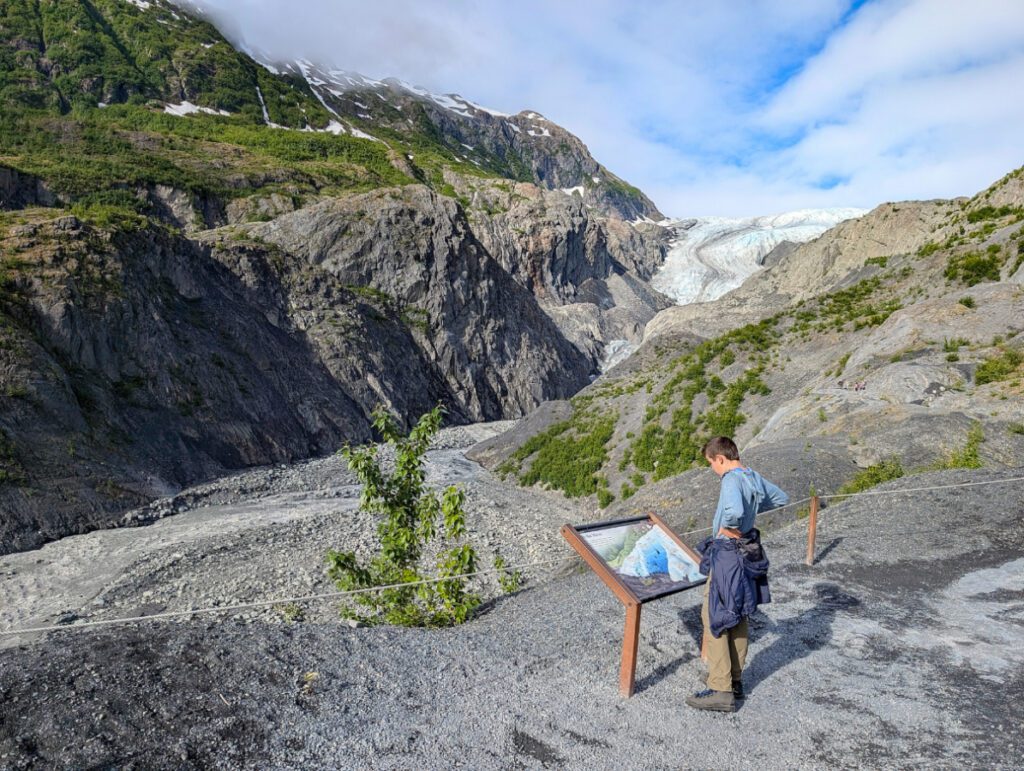
Kayaking and Paddleboarding at Kenai Fjords
Sea kayaking allows visitors to get up close to the park’s dramatic fjords and pristine coastline. Guided kayaking tours both in Resurrection Bay and deeper into the park provide an amazing way to explore Kenai Fjords. This is the chance to paddle through tranquil waters surrounded by towering rock walls and lush forests, and even with glacier views.
These tours often explore Fox Island or Aialik Bay, where paddlers may encounter sea otters, puffins, and harbor seals. Some advanced tours even venture near glaciers, where kayakers can experience the humbling size of these natural ice formations. The best time for kayaking in the park is in the summer months when conditions are calm and safe for water-based activities.

Seasons and Visitor Center Operating Hours
Kenai Fjords National Park operates primarily as a summer destination, as much of the park is inaccessible in winter due to heavy snowfall and glacial conditions. You can visit Seward year round, but for access to Exit Glacier AND the boat tours into the park, you do need to visit spring through fall. The park’s two main visitor centers are the Kenai Fjords National Park Visitor Center in Seward and the Exit Glacier Nature Center, and each is also seasonally operational.
Kenai Fjords National Park Visitor Center (Seward)
Located in Seward right by the small boat harbor, this visitor center is typically open from mid-May (or Memorial Day) through early September (typically Labor Day). During these months, the center provides information about the park, trip planning resources, and ranger-led programs. Visitors can watch films about the park’s history and ecology, pick up maps, and get advice on the best ways to experience Kenai Fjords. And you cannot forget to get your National Park Passport stamp!
Tip: if you can stop into the visitor center before heading out on your boat tour (maybe the day before) you can pick up a Junior Ranger packet, which is a great idea for down time between sights on the boat tour.
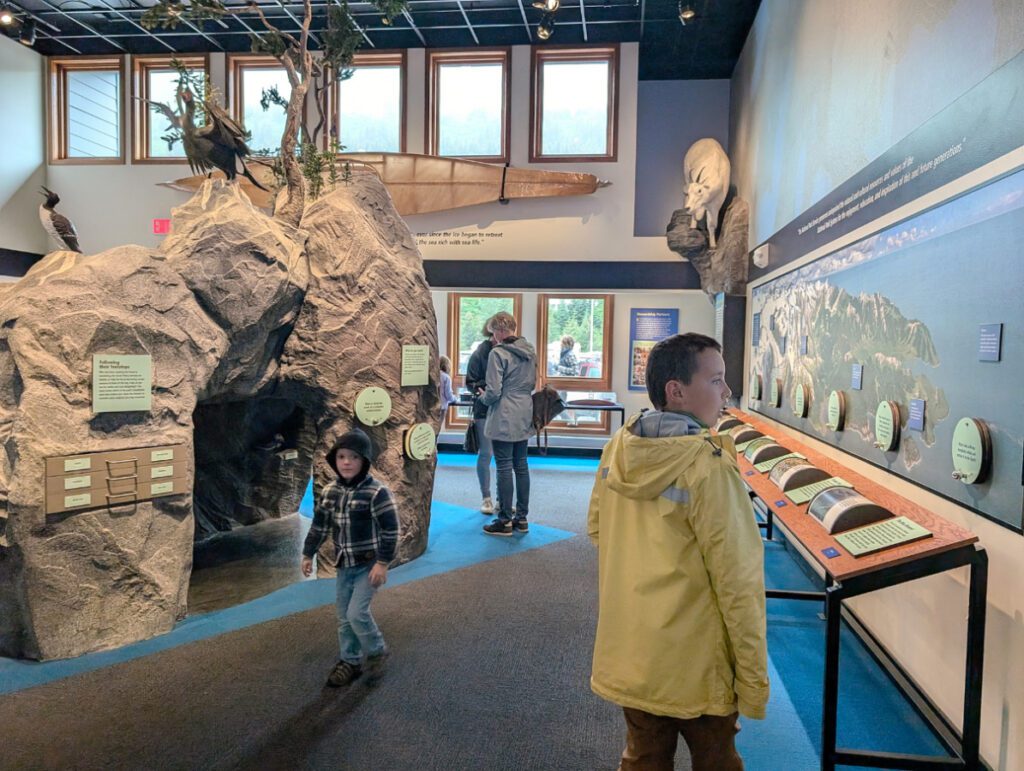
Exit Glacier Nature Center
I hope you get to visit this spot, because I love it. I think it’s a really cool visitor center. Situated at the end of road to the only road-accessible glacier in the park, the Exit Glacier Nature Center is open from late May through September (same as the main visitor center). It offers interpretive exhibits, maps, and information on hiking the trails around Exit Glacier. Rangers are on hand to provide details about the glacier’s changing landscape and climate change. In the winter, Exit Glacier is accessible to experienced skiers and snowshoers, though the nature center itself remains closed until the spring thaw.

Wildlife in Kenai Fjords National Park
This is my favorite part of visiting KFNP. Kenai Fjords National Park is home to a diverse array of wildlife. You know me, Alaska wildlife is one of my favorite topics to talk about and I’m passionate about wildlife photography. From marine animals to terrestrial species, visitors have the chance to encounter a wide range of animals that have adapted to the park’s challenging environment (including mountain goats!). Here are the most common species you might see in the park.
Marine Mammals in Kenai Fjords National Park
Humpback Whale – Humpback whales migrate to the waters around Kenai Fjords in the summer months. These incredible creatures typically arrive in late May and stay until September, feeding in the nutrient-rich waters before heading back to warmer breeding grounds in the winter.
Orca (Killer Whale) – Known for their striking black-and-white coloration, orcas are a common sight in the fjords. They are often seen hunting for fish and marine mammals, with some populations residing year-round in Alaskan waters.
Gray Whale – Gray whales pass through the waters around Kenai Fjords during their migration. Although they don’t typically stay long, sightings are common in the spring and fall. You’re much more likely to see humpback whales.
Dall’s Porpoise – These small, fast-moving porpoises often play in the bow waves of boats. Their distinctive black-and-white coloration resembles that of orcas, making them easily recognizable. They’re best captured on camera by taking video and then lifting a still frame from the video because they’re so fast.
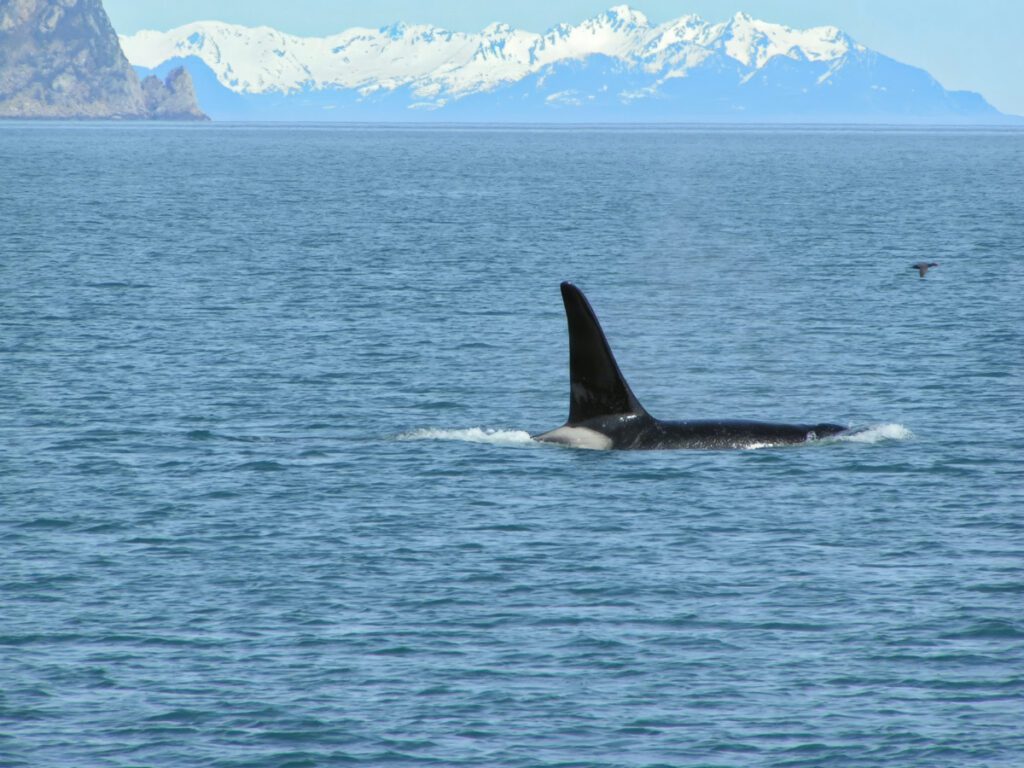
Sea Otter – Sea otters are commonly spotted floating on their backs in the calm bays and inlets. They play a critical role in the ecosystem by controlling sea urchin populations, which in turn helps maintain healthy kelp forests.
Harbor Seal – Harbor seals are frequently seen hauled out on icebergs near glaciers. These curious marine mammals feed on fish and invertebrates and are known for their shy but playful nature. Even though there are so many of them, harbor seals are some of my favorites to see.
Steller Sea Lion – These large marine mammals can often be seen lounging on rocky shores. Steller sea lions are social animals that live in colonies and are known for their loud vocalizations. They are very growly as opposed to California Sea Lions that love to bark.
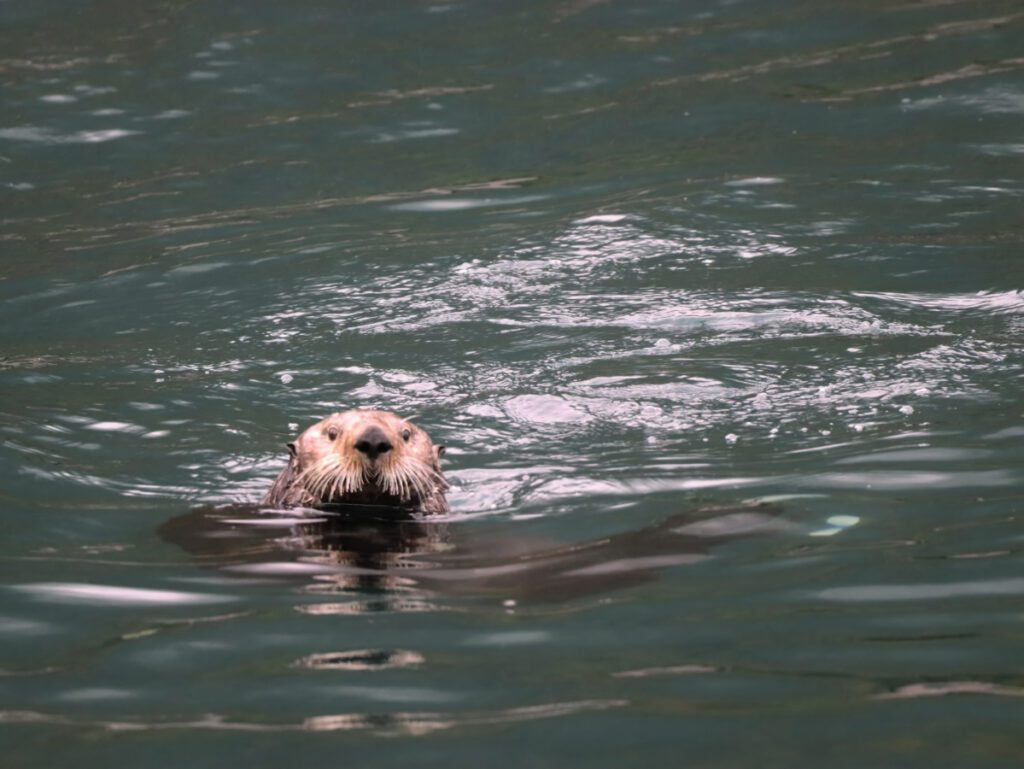
Birds of Kenai Fjords NP
Bald Eagle – The iconic bald eagle is a common sight in Kenai Fjords, where they can be seen perched in trees or soaring above the water, searching for fish. I’ve actually seen a bald eagle hunting murres here, which is really cool to see.
Puffins – Both horned and tufted puffins nest in the coastal cliffs and islands of Kenai Fjords. These charming seabirds are known for their colorful beaks and excellent diving skills.
Common Murre – Another seabird commonly seen in the park, the common murre nests in large colonies on rocky cliffs and is an adept diver, feeding primarily on fish.
Rhinoceros Auklet – These cool birds are related to puffins, but they are noticeably different. They’re tricky to photograph because they’re some of the most skittish birds in Kenai Fjords National Park.
Horned Grebe – This small, striking waterbird is often seen in the coastal waters. Horned grebes have distinctive head plumes during the breeding season and are skilled divers.
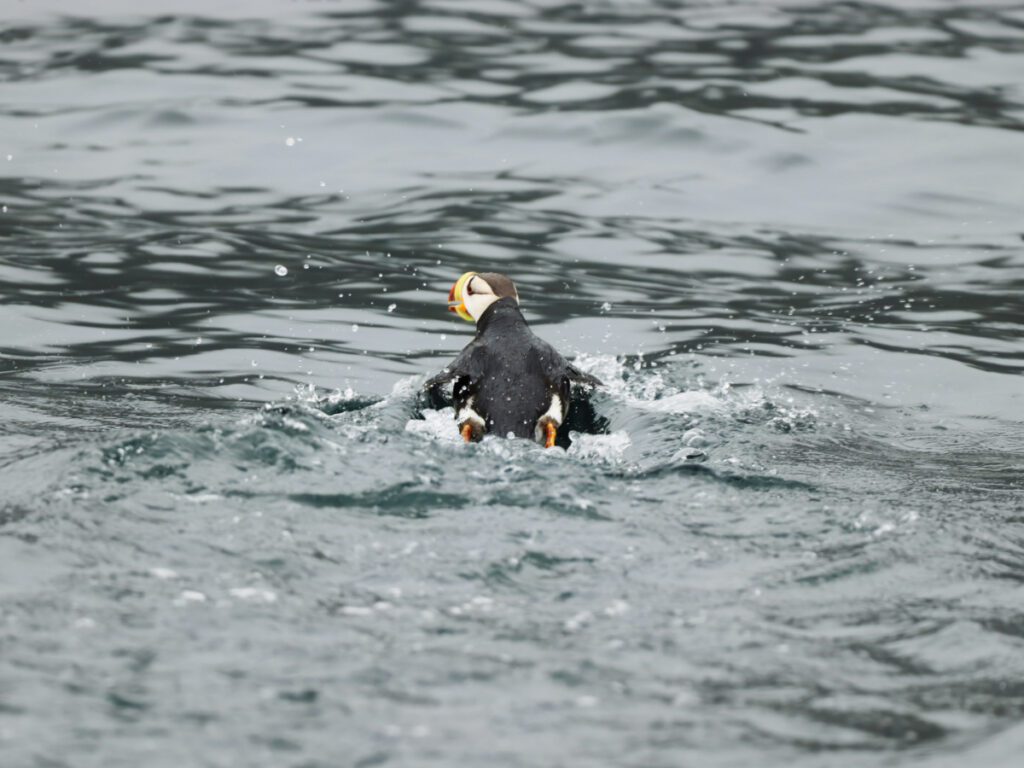
Land Mammals in the Park
Black Bear – Black bears inhabit the forests around Kenai Fjords, particularly near the Exit Glacier area. They forage for berries and fish during the summer, preparing for hibernation in the colder months.
Mountain Goat – High on the cliffs and rocky mountainsides, mountain goats are well-suited to the rugged terrain. They are recognized by their thick white coats and impressive climbing abilities.
Moose – While not as common near the fjords themselves, moose inhabit areas near the park’s forested fringes. They are best spotted in the early morning or evening hours in the valley leading to Exit Glacier, and then sometimes at the rocky bars in the quieter areas of the fjords.
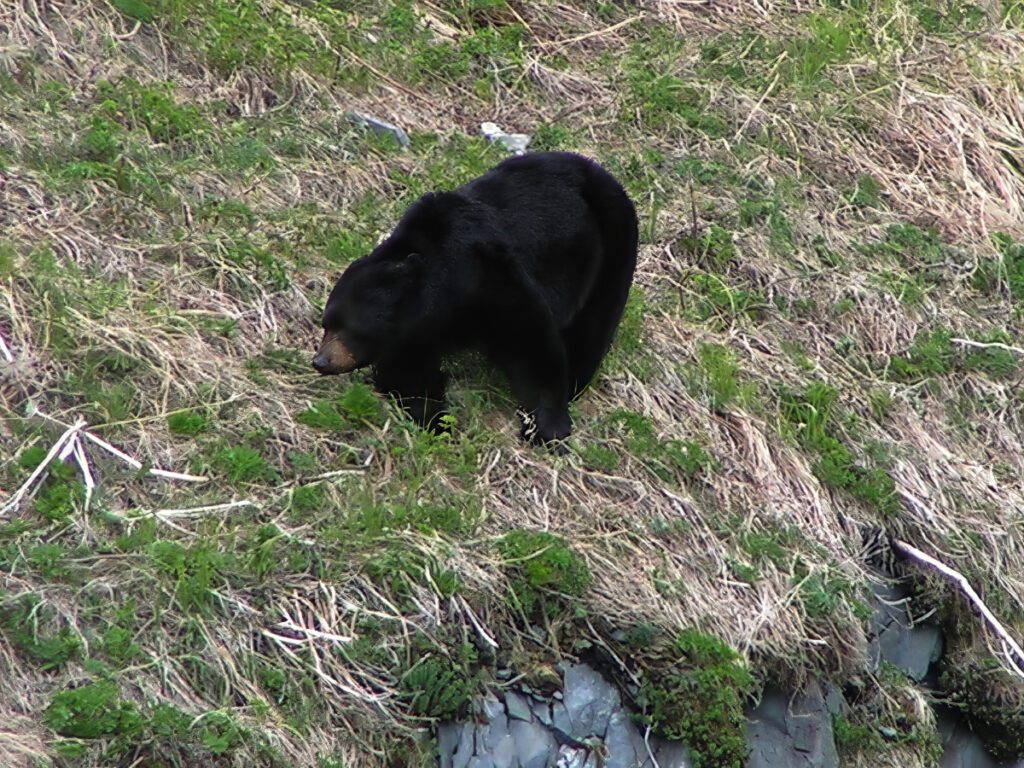
Humpback Whale Migration in Kenai Fjords
So here’s my hope for everyone visiting KFNP. I hope that you get to see humpback whales breeching and bubble net feeding. It’s amazing and it’s the absolutely wildlife highlight of the park. Humpback whales migrate to Alaska’s waters, including those around Kenai Fjords National Park, to feed on the abundance of krill, small fish, and plankton.
Humpback whales typically arrive in Kenai Fjords in late May and can be seen through September before they start their long migration south to their breeding grounds near Hawaii or Mexico. During their time in Kenai Fjords, these whales put on a spectacular show, breaching, tail-slapping, and engaging in other behaviors that make whale-watching tours one of the most popular activities in the park. Really, I hope you get to have an incredible whale day!
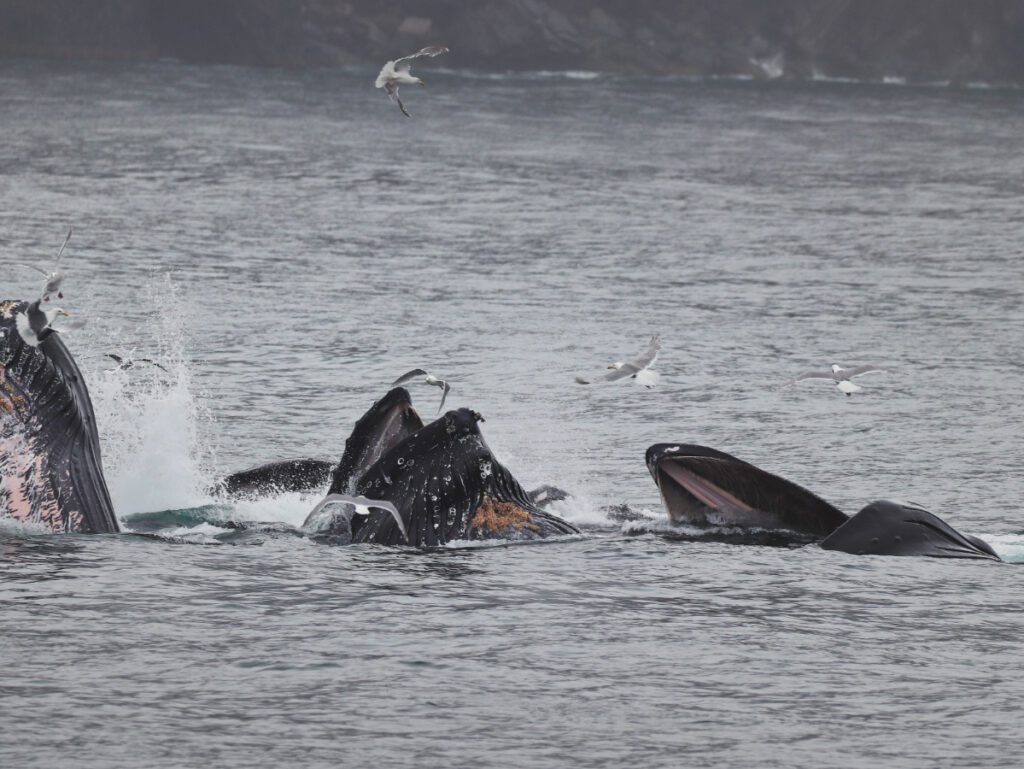
More Things to Do in Seward
Seward is a fun, beautiful small town. Located on Resurrection Bay on the southeast side of the Kenai Peninsula, you’ll find a very walkable downtown area with shops, galleries, bars and restaurants. Here are a few additional things you can add to your time in Seward to make the most of your visit:
- Alaska Sea Life Center – aquarium and education center with puffins, seals and more
- Iditarod Mile 0 – original starting point of the Iditarod dogsled race
- Seward Waterfront walking path – a great way to take in the town and Resurrection Bay
- Visit Exit Glacier – this is the only drive-to part of Kenai Fjords National Park
- Deep sea fishing trip – try your hand at catching halibut or ling cod from Seward
- Kayaking tour or rentals – there are lots of great paddling spots in Seward and the rest of the Kenai
Dining in Seward
I’ll be honest, Seward is not my favorite town for cuisine in Alaska. That doesn’t mean it’s bad, but its options are limited. I always like to set realistic expectations for anyone visiting a place for the first time. Having said that, here are our top picks for dining in Seward:
- Porthole Cafe – in the marina, food truck
- Resurrection Roadhouse – located at the Seward Windsong Lodge
- Red’s Burgers – walk up dining
- Highliner Restaurant – great food, well established
- Lone Chicharron – solid choice for Mexican food
- Seasalt Alaskan Grill & Bar – pricey but very good
- Seward Brewing Co – brewery with pub fare, right by the Alaska SeaLife Center
Where to Stay in Seward
Find a great place to stay in or near Seward. This part of the Kenai Peninsula has lots of cabins, vacation rentals and beautiful lodges, both deep in the wood or in remote areas. We’ve really enjoyed staying at the Seward Windsong Lodge in the past, but there are more options to fit whatever budget you have. You’ll enjoy it!
More ideas for your visit to Seward:
I hope you’re excited to experience Kenai Fjords National Park. Between the beautiful wildlife and tidewater glaciers, I know you’ll love it. If you have any questions about visiting Kenai Fjords, Seward, or just planning an Alaska trip please leave a comment or send us a note. We’re always happy to help with travel planning for an Alaska Trip!
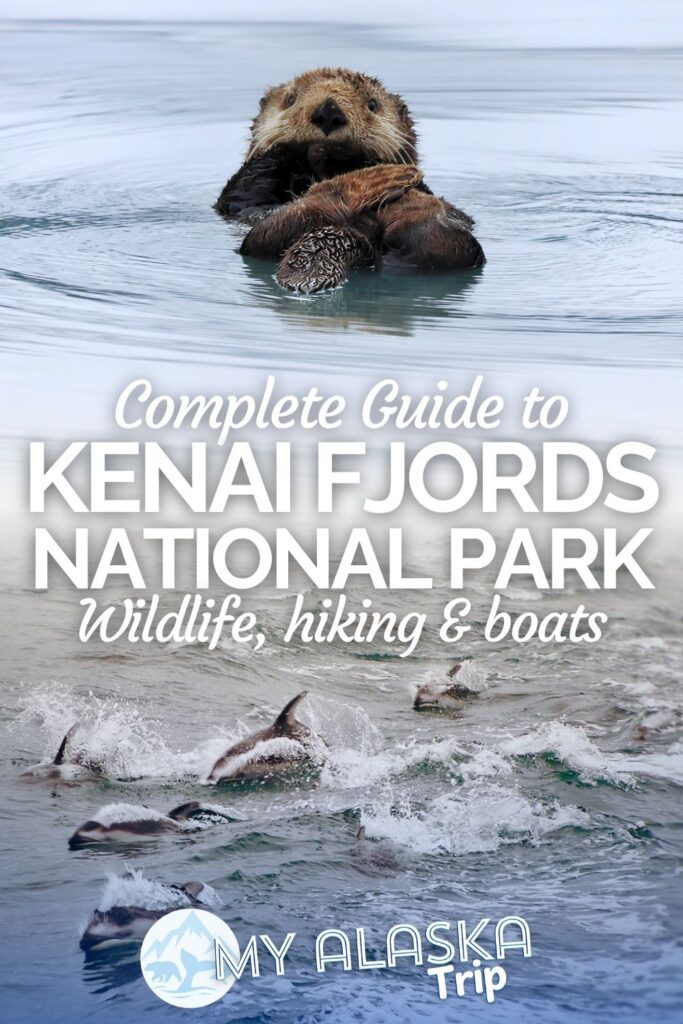


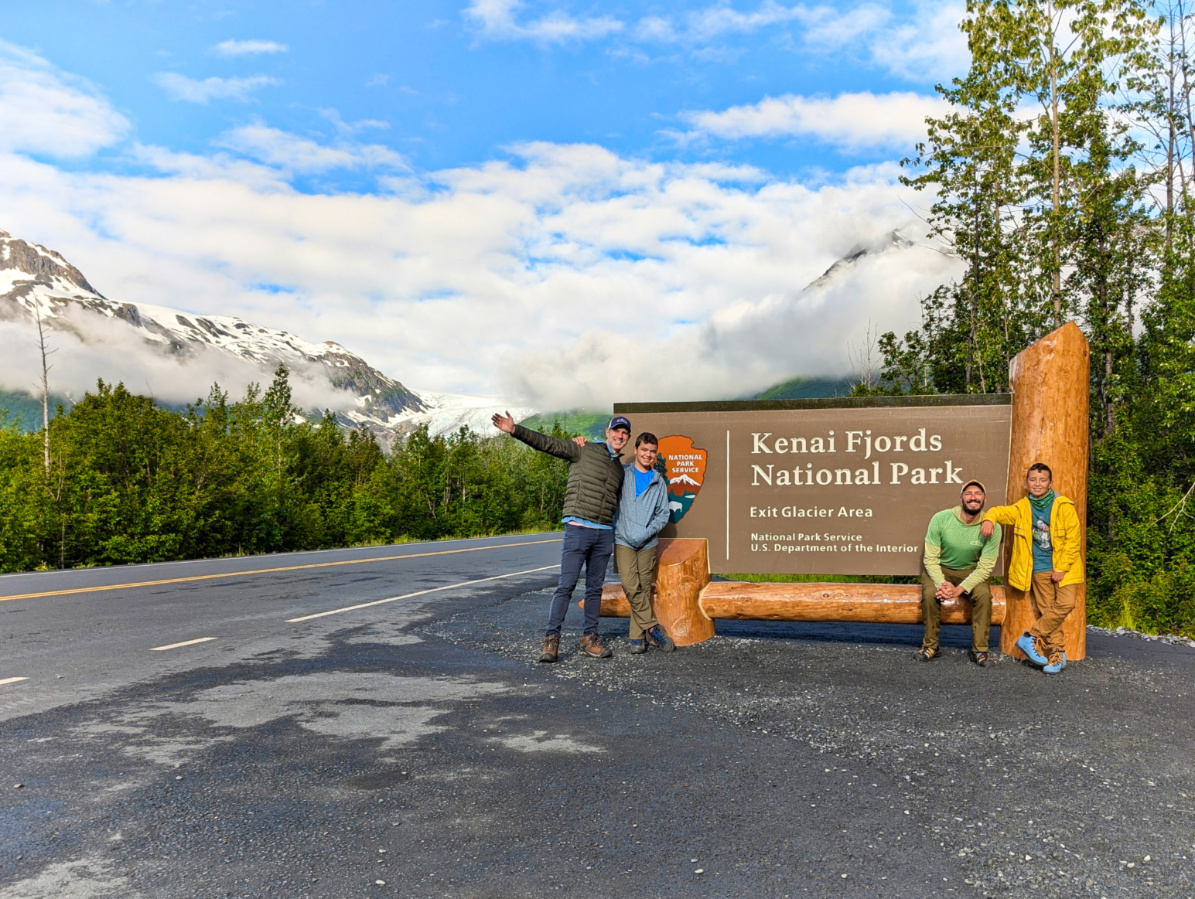
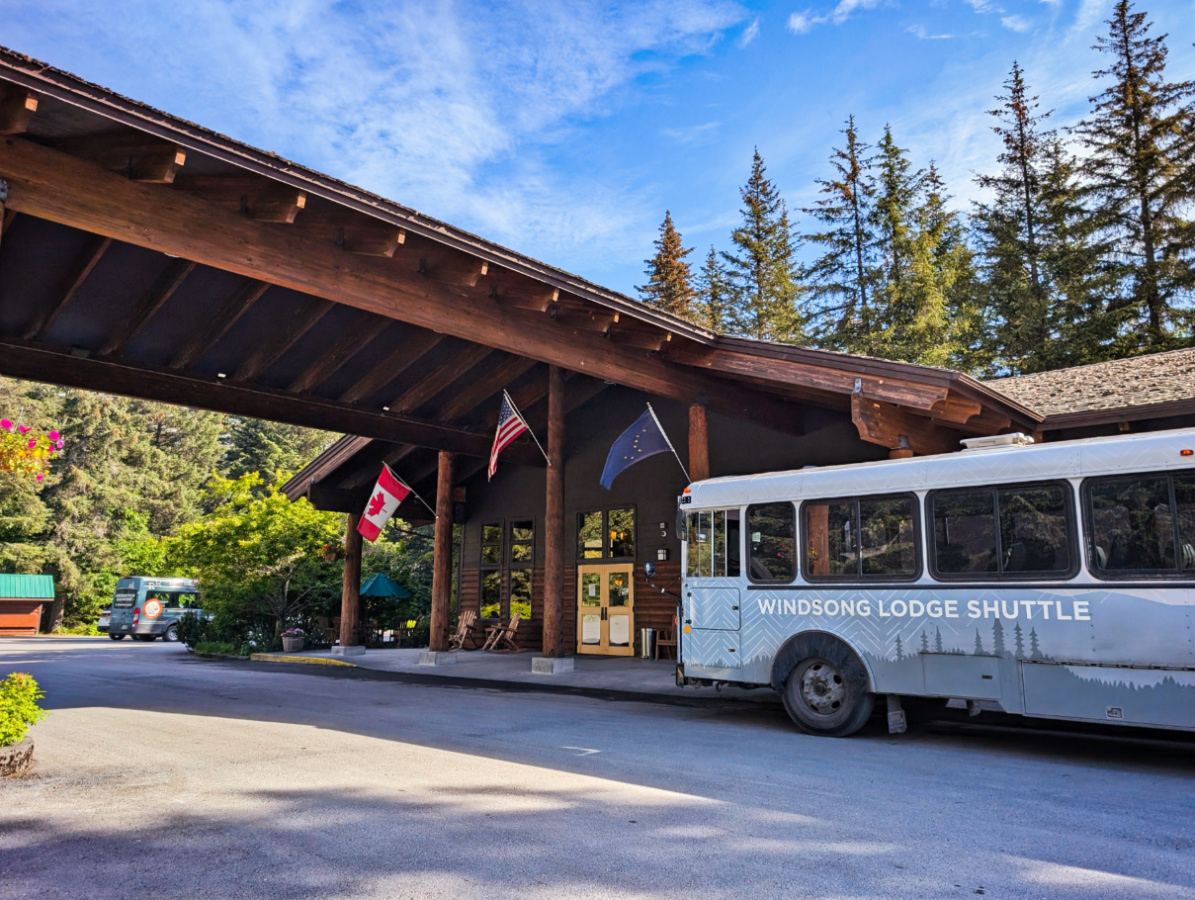
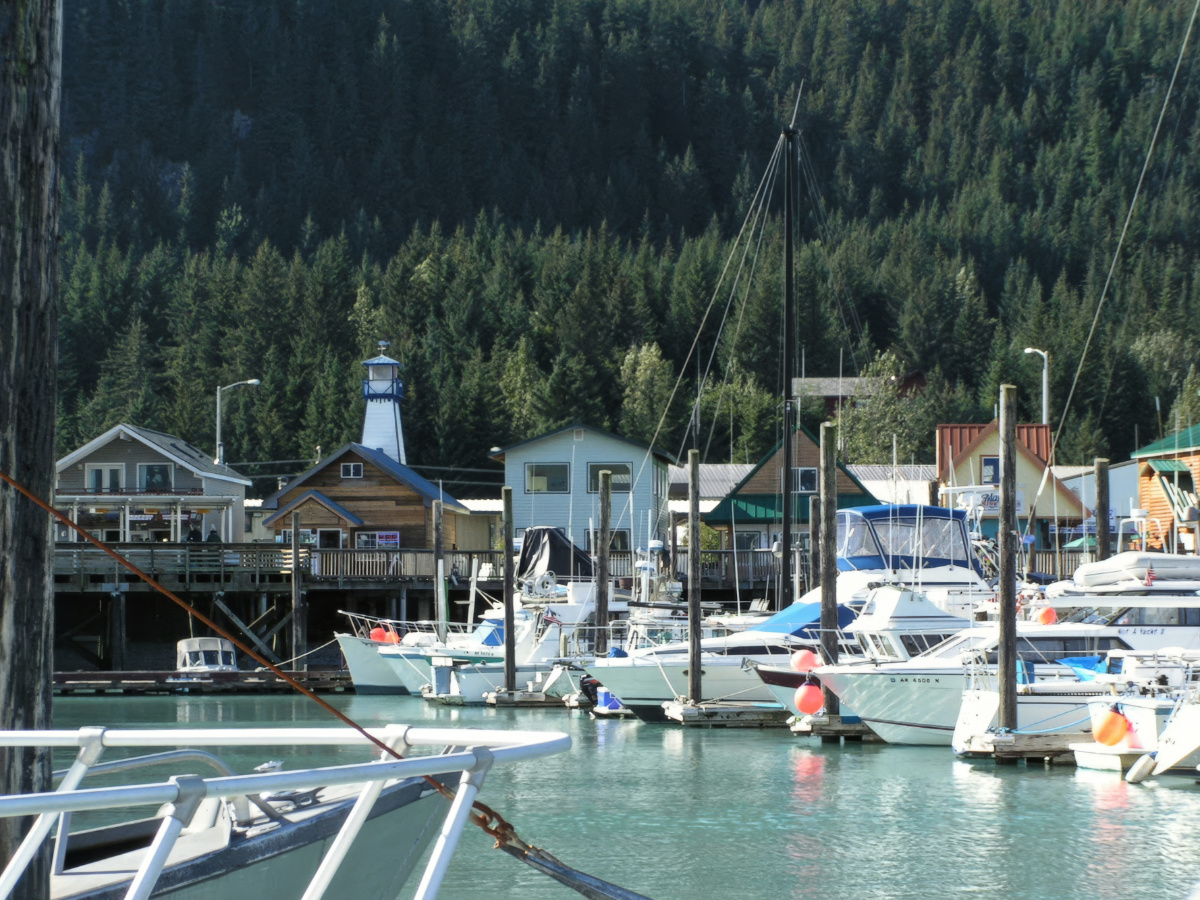
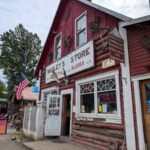
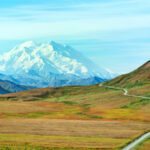
This is exactly what I needed to find! I took a hunting trip to Alaska years ago, but unfortunately I didn’t have time to visit Kenai Fjords National Park and I was really disappointed about it. I’ve been trying to plan a time to come back sooner rather than later. You included some really good info on this post that I included in my notes, as well as some places that I need to go. Thanks so much for sharing!
I hope you get the chance to get out on the water to explore. It really is one of my favorite parts of AK.